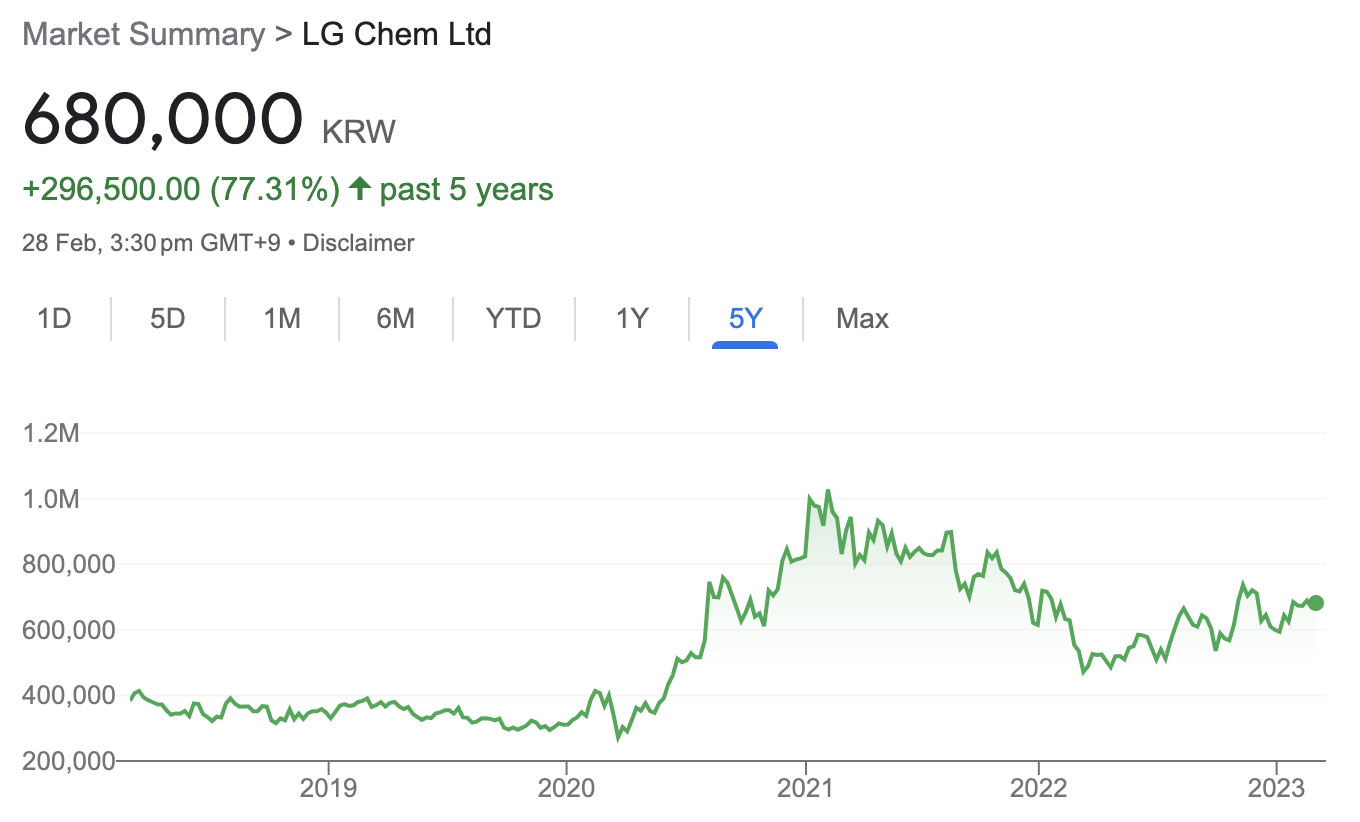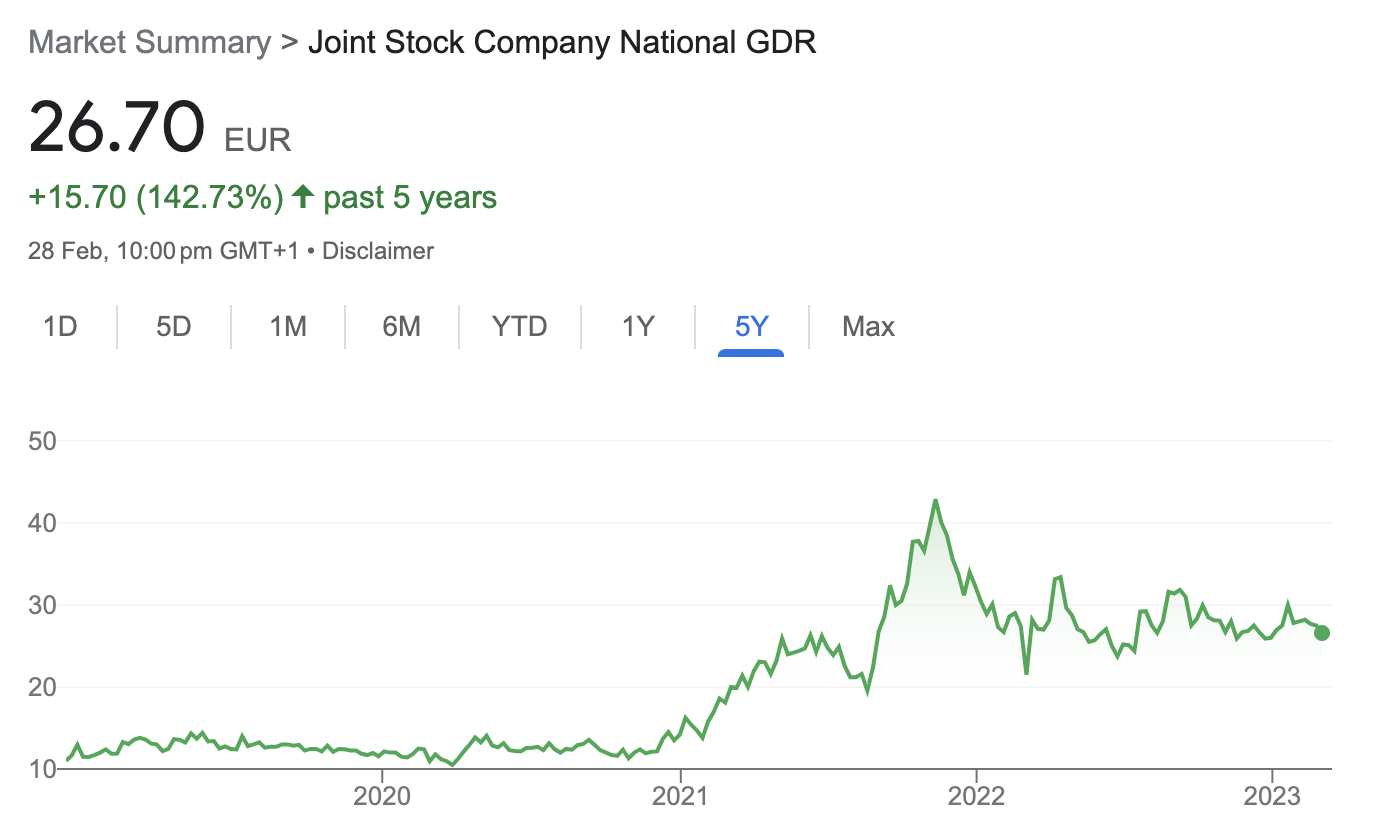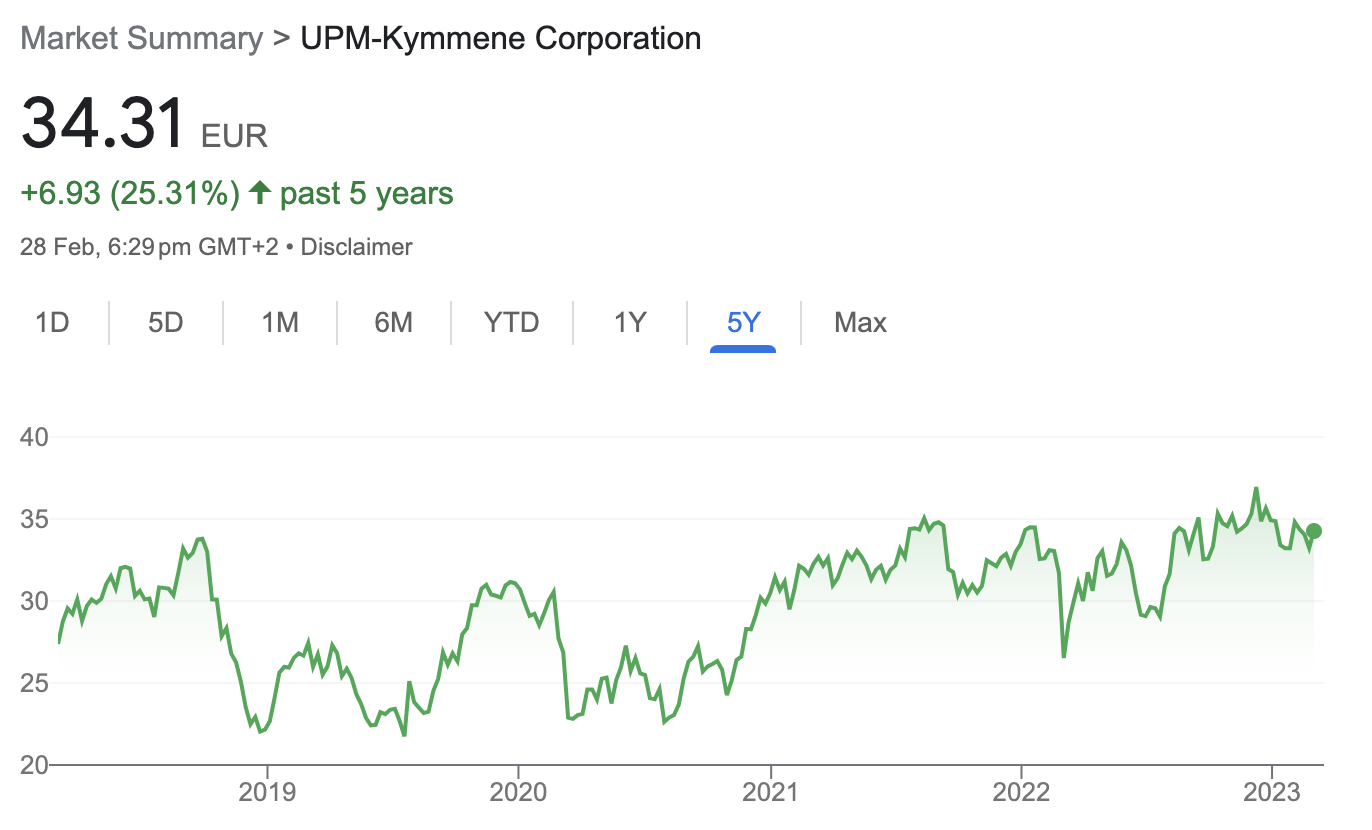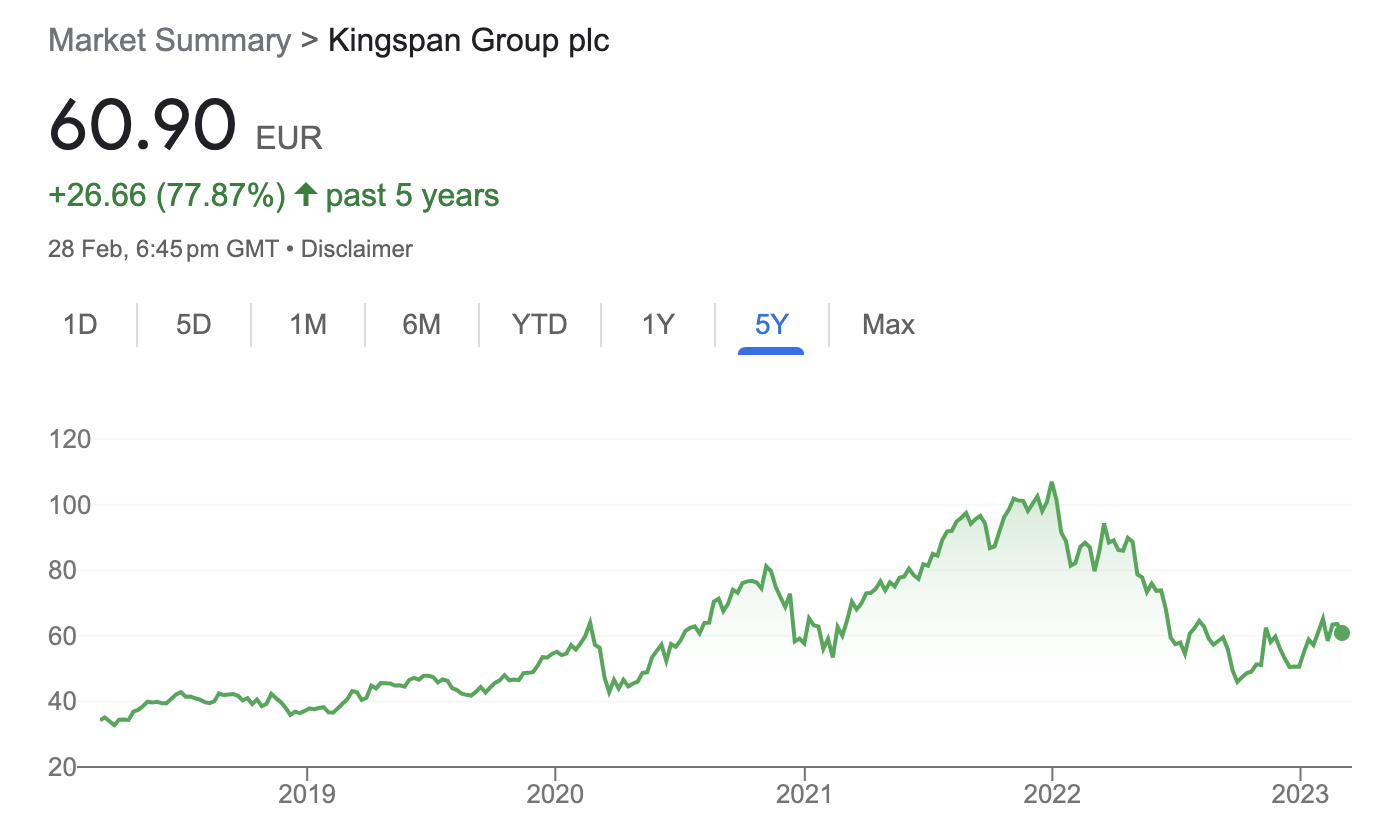Why today's headwinds have accelerated a multi-generational shift (and 4 stocks to take advantage of it)
Australia has truly been battered with natural disasters in recent years - searing heat, droughts, fires, floods - you name it, we've likely suffered through it. And yet, research released in late 2022 found that only 80% of the population believe climate change is actually occurring.
For the 20% who are nonbelievers, Platinum Asset Management has a message for you:
"Even if you don't believe in climate change, you can’t ignore the changes in corporate strategies, which are increasingly incorporating ESG metrics, monitoring for climate impact and, importantly, allocating capital to achieve lower emissions in business operations and products," portfolio managers Jodie Bannan and Liam Farlow said.
Aside from growing pressure from governments, companies that aren't visibly making real changes, may risk longer-term damage to both their brands and their ability to hire and retain staff.
Beyond that, resisting the shift could see companies' cost of capital rise, particularly considering the efficiencies brought on by new technological standards.
But the real reason to go down the electrification and decarbonisation rabbit hole is that the transition is rapidly accelerating as we speak. Yes, despite the inhumanity of the Russia/Ukraine war, investors have benefited from throwing their cash at fossil fuel companies, but now, energy security is once again at the forefront of investors' minds.
"Climate change will remain front of mind and a major focus for governments, corporates and consumers, providing the opportunity to invest in the early stages of this trend," Bannan and Farlow said.
Here, they discuss the strategy behind the recently launched Platinum Global Transition Fund (Quoted Managed Hedge Fund) (ASX: PGTX), their views on why energy still has room to run, and some of the compelling opportunities they see currently.
.jpg)
Governments around the globe are starting to shift towards policies that encourage the transition to a cleaner future. Why is this an investment opportunity?
Transitioning away from fossil fuels as an energy source and replacing the entire energy conversion platform will require tens of trillions of dollars in investment and take decades to complete. It will have wide-reaching impacts on businesses and economies.
The transition is also creating exciting investment opportunities that are broad and will impact many different industries, component supply chains and geographies.
An immediate focus is to decarbonise electricity generation, electrify transport and encourage energy efficiency.
Decarbonisation of electricity generation will require investment in solar, wind and nuclear capacity. It will also require investment in energy storage, including batteries and hydrogen, and upgrading power grids. With the support of government policies and subsidies, development momentum can already be seen in parts of Europe, China and the US.
Electrifying transport through the production of electric vehicles and buses is also underway and happening much faster than expected in some parts of the world.
Companies are increasingly investing in solutions to improve the energy efficiency of manufacturing plants, buildings and residential housing. Demand for more efficient insulation, heating and cooling systems and deployment of heat pumps is also growing fast.
Why should investors take notice (even those who don’t believe in climate change)?
Even if you don’t believe in climate change, you can’t ignore the changes in corporate strategies, which are increasingly incorporating ESG metrics, monitoring for climate impact and, importantly, allocating capital to achieve lower emissions in business operations and products.
Aside from the growing regulatory pressure, companies that are not seen to be doing something to address climate change risk longer-term damage to their brand and ability to attract and retain employees. Not investing may also risk increasing their cost of capital relative to peers who are considered more environmentally friendly.
Many of the major shifts that we have identified are also occurring because technology and standards are improving. The electrification of vehicles is occurring in parallel with the introduction of improved sensors, safety monitoring and semi-autonomous driving capability. Based on the current pace of innovation, the comfort, safety, performance and capability of a 2030-designed vehicle will be unrecognisable from a 2010-designed vehicle. There are also benefits in the home - having a more energy and thermally efficient house, with solar panels, a heat pump and home energy storage, can result in lower heating and cooling costs.
Why are you launching the Platinum Global Transition Fund (Quoted Managed Hedge Fund) ("Fund")?
The transition away from fossil fuels is accelerating as we speak. For instance, the Russia/Ukraine war has brought energy security and investment to the forefront, particularly for those countries reliant on imports, such as Germany and China.
The transition is a structural area of change that will span many decades and provide very attractive investment opportunities across a variety of industries. The risk of a recession does not change the longer-term trajectory. Climate change will remain front of mind and a major focus for governments, corporates and consumers, providing the opportunity to invest in the early stages of this trend.
Energy and resources companies have been some of the top performers over the past year. These sectors are also infamously cyclical. Is there still room in the tank for these share prices to run?
The answer depends on which part of the energy and resources complex we are talking about.
Energy stands out as an area that still looks interesting, although we are going to see ongoing volatility.
Russia’s invasion of Ukraine will have a multi-year impact on global energy markets, as Europe’s dependence on Russian oil and gas imports has shown to be an unwise position in light of Putin’s goal to expand Russia’s borders.
In oil markets, we are seeing the result of a rebound in demand post-COVID intersecting with low investment levels globally for many years, the potential need to replace Russian barrels, as well as production challenges from many countries. This has combined to leave the oil market both tight and susceptible to any small disruptions in production. This setup has been further amplified by the listed US shale producers embracing a much more balanced approach to growth and shareholder returns, and major European energy companies increasingly allocating capital away from upstream oil growth and towards ramping up their renewable portfolios. More recently, China's COVID lockdowns and US Special Petroleum Reserve (SPR) releases helped to alleviate the worst of the 2022 tightness, but both of these benefits are reversing.
Valuations in the sector remain undemanding even after the rally in share prices, with mid-single-digit PE multiples and double-digit free cash flow multiples for companies like Shell (LON: SHEL) and Glencore (LON: GLEN). The oilfield services companies are also reporting global increases in activity levels and margin expansion as service capacity is beginning to be stretched in a number of regions – so it does look like there is more to run.
In resources, the outlook is a bit more nuanced. In the short term, the performance of the resources sector will depend on the extent of China's stimulus, the energy situation in Europe, and the extent of central bank tightening cycles required to control inflation – so we are more cautious there.
In the medium term, a more positive setup may emerge. We are all aware of the growth in demand for various commodities required to decarbonise energy systems, such as copper, nickel, lithium, etc. There are long lead times for new resource project delivery, and we have a mining sector that has largely stepped up returning cash to shareholders rather than focusing on growth as it did in prior cycles.
Are you taking advantage of current market volatility? What types of companies, in particular, have you been buying?
We certainly think the sell-off has provided good entry points into the carbon transition businesses.
We are looking for companies that are already benefiting from this secular change and are seeing rapid adoption of their product offering, despite the weakness in the economic cycle. There is still strong growth in many areas, including automation of manufacturing, semiconductors and other components supporting electrification of transport and industrial processes, renewable energy, batteries, and many others, and this demand growth is currently much higher than broader industrial and consumer demand growth.
Importantly, these companies need to have strong balance sheets, which allow them to invest in the transition without relying on equity markets for funding.
In which regions are you finding the most opportunities? Has the Fund identified any local opportunities in Australia? If not, can you explain why?
We have deployed capital in some of the leading companies investing in the carbon transition. We don’t necessarily pick a region that may have a strong regional economic outlook, but instead, we invest in companies listed in various countries that dominate particular niches that the Fund is interested in and that will be key enablers and beneficiaries of the carbon transition.
To give an example, a number of the world’s best battery producers are listed in Korea. While Korea will be a small but important market for batteries, our investments in the Korean battery makers LG Chem (KRX: 051910) and Samsung SDI (KRX: 006400) aren’t to gain exposure to Korean battery demand, but to gain exposure to the global build-out in battery capacity servicing the European Union and US vehicle manufacturers that these companies are undertaking and will benefit from.
We don’t currently own any Australian companies in this Fund. Australia is and will be an important source of lithium, nickel and other inputs into the electric vehicle (EV) transition, but we don’t have any Australian holdings at this stage.
The Fund invests in a range of exciting areas – which three sectors do you believe are the most compelling right now?
Battery supply chain.
The world is seeing massive investments in battery capacity currently. Automakers are bringing multiple new EV models to the market, driven by a push to reduce fleet CO2 emissions as well as shifting consumer preferences. Batteries are also increasingly being used in home storage and grid applications. Costs have been falling as cell chemistries and performance have improved. Barriers to entry in certain areas, such as in EV applications, are particularly high given safety requirements, and once a battery maker has been specified into a vehicle model, the risk of losing that is low. This will be a high-growth area for many years, and there are opportunities across cell makers, component manufacturers and in battery metals.
UraniumUranium is used as feedstock for nuclear fuel, which is a key enabler of carbon-free nuclear power and its continued development and innovation. We expect a persistent need for the development of nuclear reactors and reactor technology to meet the ever-growing requirement for clean and reliable energy. The market has fallen into deficit in recent years due to low pricing and producer discipline, driving mines into care and maintenance, and there has been a resulting draw on inventories. Even with prices doubling since 2019, prices remain too low to incentivise the required new supply. This is paired with highly price-inelastic uranium buyers that are typically motivated by fears around the security of supply. This has been exacerbated by the Russian self-sanctioning impacting the downstream fuel cycle, with indications that this is making its way upstream towards uranium.
Automation of manufacturing
Factory automation products, robotics and software not only enable more energy-efficient manufacturing but are also key enablers of the trend towards onshoring of supply chains. They can lower the cost of manufacturing by replacing labour in certain processes, allowing for remote monitoring of sites, or enabling manufacturing to be located in areas where labour is not accessible or cost-effective. The traditional adopters of automation and software, such as automotive and aerospace industries, continue to invest as technologies improve, however, we are now seeing this spread to other industrial end markets, with much faster adoption from small and medium-sized enterprises.
What are some portfolio companies that you believe look compelling over the short term?
LG Chem (KRX: 051910)

We’ve owned this company in various position sizes for a number of years in other Platinum funds and have been recently adding to this position in the Platinum Global Transition Fund (Quoted Managed Hedge Fund).
LG Chem is a Korean-listed chemical, advanced materials and battery company. The company recently partially listed its battery business via the LG Energy Solutions (KRX: 373220) initial public offering (IPO), although it still retains 82% ownership of LG Energy Solutions. Its advanced materials business makes several products exposed to rapidly increasing battery demand, including advanced cathode and separators.
There have been many factors that caused LG Chem’s shares to halve from 2021 to 2022. The partial IPO of the battery business saw investors sell LG Chem shares, including ETFs, who switched to LG Energy Solutions to gain direct exposure to the battery business.
LG Chem’s chemicals business is also going through a downturn, having seen peak margins in 2021, and it is currently working through a trough in margins, given higher input costs and weak chemicals demand in Asia. Finally, sentiment and earnings for LG Chem and LG Energy Solutions have been impacted by the company having to meet the costs incurred with several vehicle recalls due to battery fires – for both General Motors (NYSE: GM) and Hyundai (KRX: 005380).
These headwinds are increasingly priced in. The stock is trading on around 18 times earnings(1), and we could see healthy double-digit revenue and earnings growth over the next few years, as chemicals earnings find a floor and its batteries and advanced materials businesses see strong growth. In fact, given the current market value of LG Chem’s 82% stake in LG Energy Solutions, you’re effectively getting the rest of the LG Chem business for free. This holding company discount occurs from time to time in the Korean market, although this is one of the more extreme examples.
Kazatomprom (FRA: OZQ)

Of the uranium miners, we have favoured Kazatomprom. It is the largest and lowest-cost uranium miner globally, with its consolidated production of close to approximately 40% of the global market being irreplaceable in the nuclear fuel cycle(2). Kazatomprom is producing at around 20% below approved limits(3) and is highly exposed to the market, so provides both pricing and production leverage to uranium price upside and the contracting cycle.
It is currently trading at around 10x earnings, which is a material discount to its key competitor(4). In addition, the recently paid 2021 dividend represented a yield of approximately 6% at a realised uranium price that was close to 40% below current spot levels(5). Kazatomprom has a clear distribution policy and is free cash flow positive at prices well below current levels, while still providing asymmetric upside exposure to the uranium contracting cycle.
UPM-Kymmene Corporation (HEL: UPM)

UPM is a Finnish forestry and biomaterials company. UPM’s materials help customers reduce their end-product CO2 emissions footprint and enable products to be recycled at the end of their lives, and as such, we view it as an exciting investment opportunity for the Fund.
A key area of investment is pulp, which is increasingly being used to replace single-use plastic packaging and textiles. UPM’s wood-based chemicals can be processed into low-carbon biochemicals to replace fossil fuels used in the production of PET bottles or rubber products for the automotive industry.
UPM has also been producing advanced renewable diesel for a number of years, which helps decarbonise passenger transport in Finland. There are plans to invest more in this area in the next couple of years.
UPM’s valuation is compelling at 9x earnings and a dividend yield of 6%(6), and the market is yet to recognise the longer-term change, which will see this company transition away from low return-on-capital businesses like paper towards much higher-returning biomaterials. Importantly, the company can fund all of its investments out of its cash flows.
Kingspan (LON: KGP)

Kingspan is an Irish-domiciled global building products manufacturer. It grew sales from €0.8 billion in 2001 to €8.3 billion in 2022 through a combination of organic growth and successful M&A(7). It often dominates the main products that it competes against, and seeks to convert markets over to using its cladding systems.
These cladding systems mainly comprise insulated panels, which come as a pre-assembled panel that simply has to be lifted and bolted into place, which already includes both the inner and outer metal building skin, as well as a very high-performing insulation material sandwiched between the layers. This insulation has much lower thermal conductivity than competing products such as stone and glass wool. A recently launched roofing insulated panel even comes with pre-installed solar panels, and the company expects that demand for this product will grow rapidly.
The company has branched out into complementary products such as waterproofing membranes, insulation boards, daylight systems, technical insulation, water storage and components for data centre flooring. These all provide opportunities for further M&A.
Kingspan’s share price has fallen approximately 40% from its 2021 peak. There is increased uncertainty around potential EU construction weakness and product price deflation as raw material inputs fall. The valuation multiple returned to longer-run averages as a result, and earnings estimates have fallen modestly. At 20x earnings for a company with a strong market position, historical 17% revenue CAGR, and a long runway of organic and further M&A growth, it’s an interesting opportunity(8).
Learn more
The Platinum Global Transition Fund (Quoted Managed Hedge Fund) aims to provide capital growth over the long term by investing in undervalued companies from around the world that are seeking to financially benefit from the transition away from fossil fuel-derived energy and goods production and consumption i.e. the carbon transition. Find out more below

Disclaimer: This article has been prepared by Platinum Investment Management Limited ABN 25 063 565 006 AFSL 221935, trading as Platinum Asset Management ("Platinum"). Platinum is the responsible entity of the Platinum Global Transition Fund (Quoted Managed Hedge Fund) ("Fund"). The Fund’s latest Product Disclosure Statement ("PDS") provides details about the Fund - you should read the PDS before making any investment decisions. You can obtain a copy of the PDS and the Fund’s target market determination at (VIEW LINK), or by contacting Investor Services on 1300 726 700 (Australian investors only), or 0800 700 726 (New Zealand investors only), or 02 9255 7500, or via invest@platinum.com.au. Warning: By investing in companies involved in manufacturing or resource extraction the Fund will not by its nature have a low carbon emissions portfolio relative to the broader listed equity market and may have investments in companies that currently have material fossil fuels businesses. This information is general in nature and does not take into account your specific needs or circumstances. You should consider your own financial position, objectives and requirements and seek professional financial advice before making any financial decisions. Platinum does not guarantee the performance of the Fund, the repayment of capital or the payment of income. The market commentary reflects Platinum’s views and beliefs at the time of preparation, which are subject to change without notice. No representations or warranties are made by Platinum as to their accuracy or reliability. To the extent permitted by law, no liability is accepted by Platinum for any loss or damage as a result of any reliance on this information.
2 topics
2 stocks mentioned
1 fund mentioned
2 contributors mentioned

